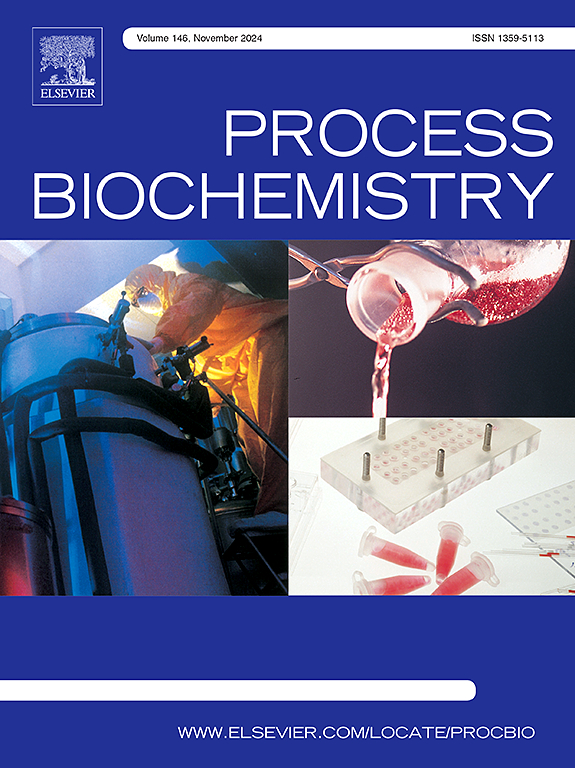A higher C/N ratio enhances nitrogen treatment and the biodiesel characteristics of algal-bacterial bioflocs derived from aquaculture wastewater
IF 3.7
3区 生物学
Q2 BIOCHEMISTRY & MOLECULAR BIOLOGY
引用次数: 0
Abstract
One of the major issues facing intensive aquaculture is controlling pollution and converting nutrients in the effluent into usable biomass. This study investigated the generation of algal-bacterial bioflocs (ABBs) from Chlorella pyrenoidosa at different C/N ratios in aquaculture wastewater supplemented with glucose. Subsequently, we evaluated the nitrogen and phosphorus metabolism of this biomass, analyzed nutrient composition and potential as a biodiesel, conducted a thorough analysis of the microbial community. During the ABBs production, higher C/N ratio promoted the utilization of various forms of nitrogen, but resulted in more nitrogen losses. ABBs produced at high C/N ratio was more favorable for nitrogen conversion in light and dark conditions, especially at C/N 15, but unfavorable for crude protein (35.08 ± 1.89 %) and crude fat (13.01 ± 1.79 %) accumulation. Additionally, ABBs produced with glucose supplementation exhibited a higher cetane number, which is advantageous for producing eco-friendly, high-performance biodiesel. The high-throughput sequencing analysis demonstrated a significant abundance of Pesudomonas and Bacillus in high C/N ratio groups, which explained the higher removal efficiency and removal rate of nitrogen from wastewater. In conclusion, the addition of carbon sources improved both nitrogen removal and biodiesel performance of ABBs.
求助全文
约1分钟内获得全文
求助全文
来源期刊

Process Biochemistry
生物-工程:化工
CiteScore
8.30
自引率
4.50%
发文量
374
审稿时长
53 days
期刊介绍:
Process Biochemistry is an application-orientated research journal devoted to reporting advances with originality and novelty, in the science and technology of the processes involving bioactive molecules and living organisms. These processes concern the production of useful metabolites or materials, or the removal of toxic compounds using tools and methods of current biology and engineering. Its main areas of interest include novel bioprocesses and enabling technologies (such as nanobiotechnology, tissue engineering, directed evolution, metabolic engineering, systems biology, and synthetic biology) applicable in food (nutraceutical), healthcare (medical, pharmaceutical, cosmetic), energy (biofuels), environmental, and biorefinery industries and their underlying biological and engineering principles.
 求助内容:
求助内容: 应助结果提醒方式:
应助结果提醒方式:


